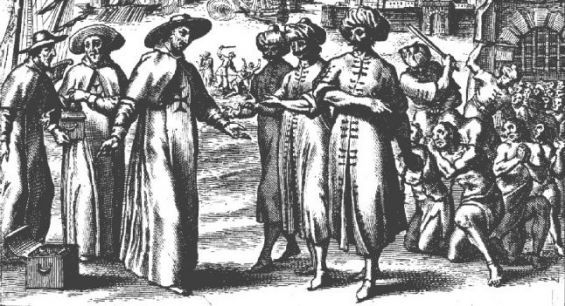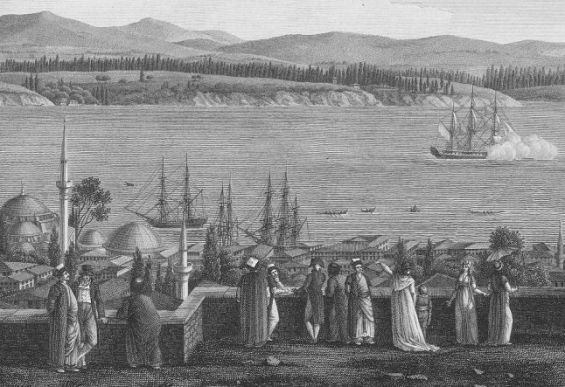In the 18th century and during the reign of the Alaouite Sultan Mohammed ben Abdellah, Tahar ben Abdelhak Fennish was appointed as Morocco’s ambassador to the Netherlands, France and England, where he negotiated the signing of several treaties.
In 1777, and after the United States of America signed the Declaration of Independence, Fennish was charged by Mohammed III to sign the famous Treaty of Friendship and Amity, making of Morocco the first country to recognize the nation’s independence.
The French captives
Tahar ben Abdelhak Fennish was a caid, and the beloved son of Salé’s distinguished governor Abdelhak Fennish who belonged to an Andalusian family known for piracy.
«Tahar Fennish was also commander of the Moroccan artillery», wrote Rabih Saied in his dissertation entitled «Le Regard français sur les envoyés marocains du XVIIe et XVIIIe siècles».
«In 1773 Fennish was sent as the Sultan’s ambassador to London», recalled Saied, indicating that four years later, the diplomat headed to the Netherlands. During the same year Mohammed III decided to appoint Tahar Fennish as Morocco’s ambassador to France.

The Sultan’s decision was made after tension erupted between Morocco and France over a number of French slaves.
On the 27th of December 1775, a French ship called La Louise sank near the Boujdour port in the Sahara. «The captain and twenty men from the crew managed to reach the shore, but they were captured by the city’s inhabitants and were sold as slaves», explained Saied.
In an attempt to free the French captives, France’s Chargé d’Affaires in Morocco, Louis de Chénier, who knew about the incident, sought the help of Sultan Mohammed ben Abdallah in April 1776.
A different treaty
Sidi Mohammed refused to accept the money sent by the king of France to free the French captives, but in return, he asked de Chénier to release Moroccan slaves, detained in Malta. Talks between Morocco and France failed to ensure the solution suggested by Mohammed III, who decided to entrust caid Fennish with this mission.
.jpg)
«On October the 11th, 1777, Tahar Fennish embarked in Tangier. He took the French captives and six horses to offer them to the King of France», wrote the same source. After a stopover in Gibraltar, Fennish arrived in Marseille on the 1st of November.
Accompanied by his translator, the Moroccan diplomat arrived in Paris on January the 10th, 1778. Caid Tahar ben Abdelhak Fennish was received on January the 22nd by King Louis XVI. During this audience, he delivered Sultan Mohammed III’s letter to the French sovereign
In his message to the King of France, the Sultan commented on the behavior of the French Chargé d’Affaires that he did not appreciate.

The French authorities finally reached an agreement with Fennish on February the 18th, 1778. But the treaty had nothing to do with the Moroccan captives. In fact, Morocco agreed to start calling the King of France «the greatest leader of Christians, the emperor of France», while Paris on the other hand, promised to use the title «the greatest leader of Muslims, the emperor of Morocco and the Maghreb».
Tahar Fennish left Paris before the end of February 1778. He embarked on the 16th of March in Touloun and arrived ten days later in Tangier.
The career of Tahar ben Abdelkader Fennish was marked by another mission. He negotiated with the United States’ commissioner to France Thomas Barclay, the conclusion of a treaty between the Kingdom and the independent nation.
Tahar Fennish was also sent a letter by Thomas Jefferson.




 chargement...
chargement...











